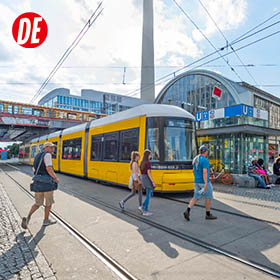King's Square
Greek Style Architectures
Königsplatz, or King's Square in Munich is a neoclassical city square that took 50 years to complete, with Propyläen Gate at the front side, flanked by the Staatliche Antikensammlungen and the Glyptothek.
Starting in 1816, the Königsplatz (King’s Square) in Munich is a European Neoclassical City Square that took nearly 50 years to complete.
Inspired by the Acropolis, the square features three separate buildings: the Propyläen Gate, the Staatliche Antikensammlungen (Art Museum of State Collections of Antiquities), and the Glyptothek (Ancient Sculpture Museum), each with a different shape of Greek columns.
The Propyläen Gate (Propylaea) at the front of the King’s Square is a symbol of Bavaria’s friendship with Greece, built by King Ludwig I of Bavaria at his own expense and as a monument to the election of his son Otto I as King of Greece. The gates are supported by 28 Greek Stone Columns, with tall towers erected on either side.
Manywhere Tips:
This gate was completed just in time, because if it had been finished a few months later, it would have witnessed Otto I being ousted from the throne and running back to Bavaria.
On either side of King’s Square are the Staatliche Antikensammlungen and the Glyptothek, which have become showcases of ancient Greek architecture for their Corinthian columns and Ionic columns. The two museums display collections of ancient Greek and Roman art, much of it from the personal collection of King Ludwig I of Bavaria.
During Nazi rule, the Königsplatz was used as a meeting place for the Nazi army, who added several additional buildings and removed the grass and trees of the square. It was not until the end of World War II that King’s Square was slowly restored to its original state.
Attractions around Königsplatz in Munich
Tags:
Related
City Library Of Stuttgart360
Iconic Modern LibrarySantiago Bernabeu Stadium360
Sanctuary for Real Madrid FansCasa Mila / La Pedrera360
Modernist Building Before Its TimeGallery Of The Academy Of Florence360
Michelangelo's DavidMiradouro de Santa Luzia360
Elegant Garden with Tile PaintingsPisa Cathedral360
Masterpiece of the Middle AgesLouvre Museum360
9,000 Years of Human HistoryQingdao Beer Street360
Never Ending CheersOld Public Hall Of Hakodate Ward360
Iconic Western-style ArchitectureSant'Andrea della Valle360
Where the Opera Tosca Took PlaceHimeji Castle360
Unharmed Castle of Beauty and LuckShiroi Koibito Park360
Theme Park of Sweet Fantasies





























No comments yet, post the first one!